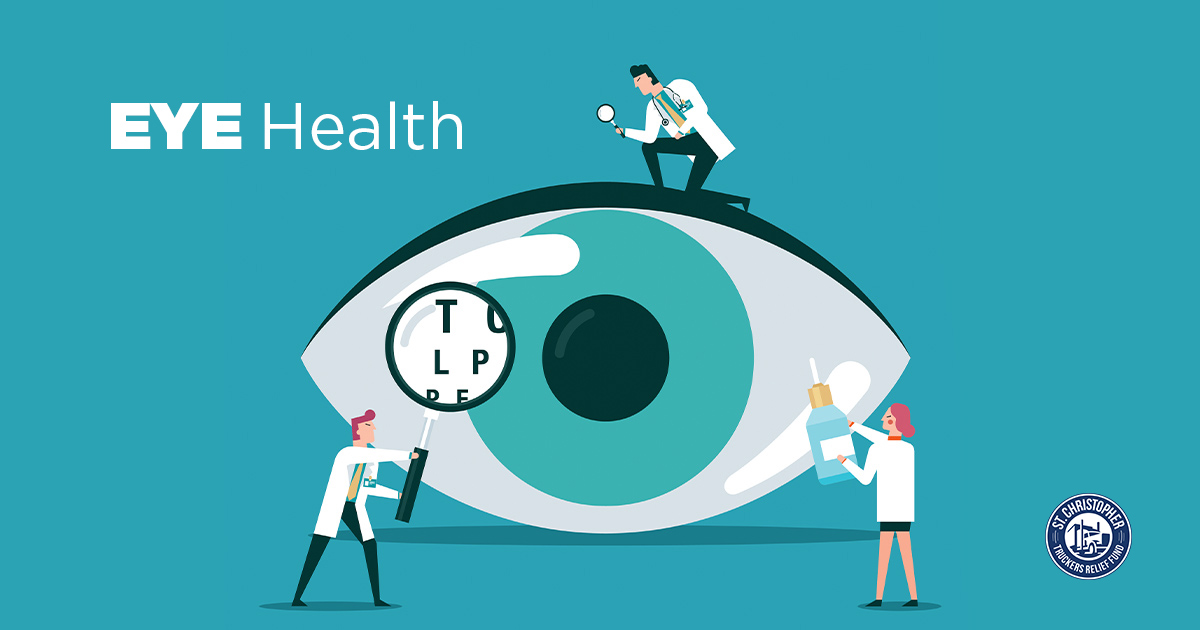
It’s been said that the eyes are the window to the soul. We depend on our eyes probably more than any other sense. In fact, the average person perceives approximately 80% of their impressions through their eyes. The months of January and February are dedicated to eye health. January is Glaucoma Awareness Month and February is Age Related Macular Degeneration Month. We must take care of our eyes! Let me tell you why.
Glaucoma is the leading cause of vision loss and/or blindness in the United States. Often there are no symptoms in its early stages, so it makes sense why half the people who have glaucoma don’t know it. Glaucoma is when a buildup of fluid in the eye puts pressure on the optic nerve. This pressure causes irreparable damage to the optic nerve.
Could you be one of the 1.5 million who have glaucoma and not know it? Here are some risk factors to be aware of (one of them may surprise you):
• African Americans over age 40
• Anyone over age 60
• Anyone with a family history of glaucoma
• Smokers
There is no cure for glaucoma, but early detection and treatment can stop and prevent further damage, so be sure to keep up with yearly eye exams.
Age -Related Macular Degeneration (AMD) is another disease of the eye that may have no symptoms its early stages. AMD affects the central vision, and with it, the ability to see fine details. According to Johns Hopkins Medicine, AMD is the most common cause of severe vision loss in people aged 50 and older. In AMD, a part of the retina called the macula is damaged. It may go unnoticed until the disease has already caused damage in both eyes. Some later symptoms may include having difficulty recognizing faces, trouble reading, seeing clearly when driving, and having difficulty seeing in dim light. You may also notice changes in how color is seen.
It’s important you know the risk factors for macular degeneration, as well.
• Family History of AMD
• Age
• Heart disease, high blood pressure, or high cholesterol
• Obesity
• Poor nutritional diet
• Diabetes
• Smokers have a significant increased risk
While we can’t control some of these risk factors, such as age, gender, and family history, there are some variables we can control. What can you do to make sure you don’t develop either glaucoma or AMD?
1. Get your eyes checked. Take time to make an appointment with an optometrist or an ophthalmologist yearly.
2. Do you notice any common denominators in the risk factors? Smoking is listed as a risk factor for both glaucoma and AMD. You can quit smoking and your risk of developing these diseases will drop. Need help quitting, register here for our free tobacco cessation program.
3. Eat more whole, nutrient dense foods such as healthy fats, low carb fruits such as berries, and green leafy vegetables. Cut back on or cut out foods that are prepackaged, and those that are high in unhealthy fats and calories.
Our eyes are crucial in relating to the world around us. Our livelihoods depend on having good vision. Without the gift of sight, we could not see those we love, drive our vehicles, or see a sunset. We often take our vision for granted. That stops now. Make the call, get online, and make the appointment. See the eye doctor. Your vision may depend on it.
